
As enterprises shift more of their workloads into public clouds and grow out their multicloud strategies – many are using three or more public clouds for their applications and data to as much protect them against problems with the cloud provider as to take advantage of particular strengths that each cloud provider offer – there can be the tendency to think that many will end up putting everything in the cloud.
The increased agility and scalability that comes with the cloud, as well as removing the myriad headaches that come with managing datacenter infrastructure and the ability to more easily leverage emerging technologies like artificial intelligence (AI) and machine learning, would feed into this argument.
But many enterprises are adopting hybrid cloud models, where they take advantage of public clouds for some workloads while keeping others behind the firewall and on-premises for a number of reasons, ranging from security and compliance issues to the challenges that would come from refitting their all of their legacy applications to work in the cloud. However, they still want the flexibility and the scalability of the cloud in their datacenters – or their edge environments – and the ability to easily move applications and data back and forth between their on-premises infrastructure and the cloud as well as between clouds. And they want a single tool to manage all of it.
Public cloud services providers are moving quickly to expand their reach in these hybrid cloud environments, enabling enterprises to leverage the public cloud services within their on-premises environments. Microsoft almost three years ago announced plans to make its Azure services available in the datacenter, partnering with a range of hardware providers like Dell EMC, Hewlett Packard Enterprise and Lenovo to roll out certified offerings for the initiative. A year later the company announced Azure Stack and has been building it out since.
Over the past couple of years, other cloud providers have made similar moves. At its re:Invent show late last year, Amazon Web Services introduced Outposts, racks of its own servers and storage appliances that can run on-premises and easily connect back to AWS cloud services. The idea is to make systems within the datacenter an extension for their AWS or VMware Cloud in AWS environment rather than simply trying to sync their on-premises infrastructure with that in the cloud.
Google Cloud jumped in earlier this year with the introduction of its Cloud Services Platform to help enterprises adopt Google Cloud services in their datacenters and just a couple of months later rolled out Anthos, a bulkier version that came with an array of hardware OEM partnerships with Dell EMC, HPE, Lenovo and others to bring those services on-premises. IBM Cloud is making similar moves, including earlier this year when it announced that Watson AI services – which had only been accessible on the IBM Cloud – would be accessible on IBM Cloud Private for Data.
It was only a matter of time before Dell and VMware Cloud made similar moves. VMware last year announced Project Dimension, an effort to bring VMware Cloud capabilities into the datacenter. That came this week at the Dell Technologies World show in Las Vegas when Dell unveiled VMware Cloud on Dell EMC, a productization of Project Dimension and part of a broad cloud strategy that included another initiative to run VMware Foundation on Dell EMC hardware.
As part of the new Dell Technologies Cloud initiative, the company also introduced Dell Technologies Cloud Platforms, jointly engineered offerings from Dell EMC and VMware that enables enterprises to run the VMware Cloud Foundation infrastructure and management software on VxRail or VxBlock 1000 converged infrastructure on-premises. At the same time, Microsoft chief executive officer Satya Nadella announced that Cloud Foundation can now run natively on Azure, expanding VMware’s reach beyond AWS, Alibaba, and a host of smaller cloud providers. Dell also was named as a partner in Google Cloud’s Anthos announcement and said at the Dell user conference that it expects to expand to Google Cloud in the future.
“What you’re seeing inside the VMware Cloud partner program is we have over 4,000 [cloud] partners and think of adding Azure to that,” Dell CEO Michael Dell said when meeting with journalists and analyst at the show. “It’s certainly an important one to add. Within the [console] of the Dell Technologies Cloud, customers will be able to move workloads seamlessly among all those 4,000 cloud providers and their on-premises environments.”
With the VMware Cloud on Dell EMC, the two companies – Dell owns about 80 percent of VMware – are essentially running VMware’s Software Defined Data Center (SDDC) software – built atop of vSAN, vSphere and NSX, VMware’s software-defined networking technology – VxRail, with plans to broaden what hardware it will run atop. It’s a cloud-as-a-service and part of a larger strategy to give organizations that are struggling to manage highly distributed environments where workloads are moving through the cloud, edge and datacenter, according to Kit Colbert, vice president and CTO of VMware’s Cloud Platform business unit. What they need is consistency in both the infrastructure and the tools to manage it all.
“It’s very clear to us and the industry that customers are taking a multicloud approach,” Colbert tells The Next Platform. “They have datacenters, they have one or more public clouds, they have edge locations. Across all that infrastructure, it creates operational challenges. These folks are thinking about developing new tools and skill sets and there are challenges managing security and so forth. Our solutions and our focus have always been, ‘Let’s deliver a consistent infrastructure across all these different locations.’ That infrastructure is our Software Defined Data Center – the management, compute, storage and networking. What we’re looking at here is how to extend that. Where we’re focusing is on-premises. There’s this narrative out there that all workloads will move into the public cloud, but VMware’s viewpoint has always been that hybrid cloud is really here today. It’s not a transient state but it is a long-term state.”
That focus on consistency and common componentry from the edge through the datacenter and out to the cloud echoes what John Roese, global CTO at Dell EMC and chairman of the Cloud Foundry Foundation, recently told The Next Platform about edge infrastructure. The edge needs to be part of a continuum that includes the datacenter and cloud, so the technology at the edge needs to have the same components as elsewhere if enterprises are going to be able to easily manage their entire distributed infrastructure and if that edge infrastructure is going to be able to keep up with the innovation going on the datacenter.
VMware Cloud on Dell EMC is a subscription-based cloud service fully managed by VMware, from patching to updating to support, and offers enterprises the benefits of the cloud in their datacenters, from the agility and scalability to pay-as-you-go pricing. IT administrators can order a half or full rack of systems with whatever configuration they’re looking for and it is sent to the customer’s datacenter and installed by VMware technicians. It’s in beta now and will be generally available in the second half of the year.
“As far as that cloud service, it means that there’s also a cloud economic model,” Colbert says. “It’s an OPEX model. It’s a monthly subscription, or the customer can prepay for one year or three years … just as you have in the public cloud. The way to look at it is as a cloud service, but it just so happens that the hardware is located on-premises.”
That includes the hardware, software, and services, he says.
“With the hardware, we’re really looking at a half-rack or full-rack configuration,” Colbert says. “We’ll have three or more VxRail servers in there and all the things that customers are looking for, like power units and UPS, top-of-rack switches and VeloCloud appliances as well for network connectivity. That’s the physical package customers will have running on-premises at their location, either at the edge or in their datacenter. Now we come to town with a ton of services. There is the VMware Cloud service that we have that’s operated by our internal engineers. In order to do that, we have to work very closely with Dell EMC so we’re integrated with their supply chain, their manufacturing processes, with their shipping and installation. The point of all this is that it’s very seamless for the customer.”

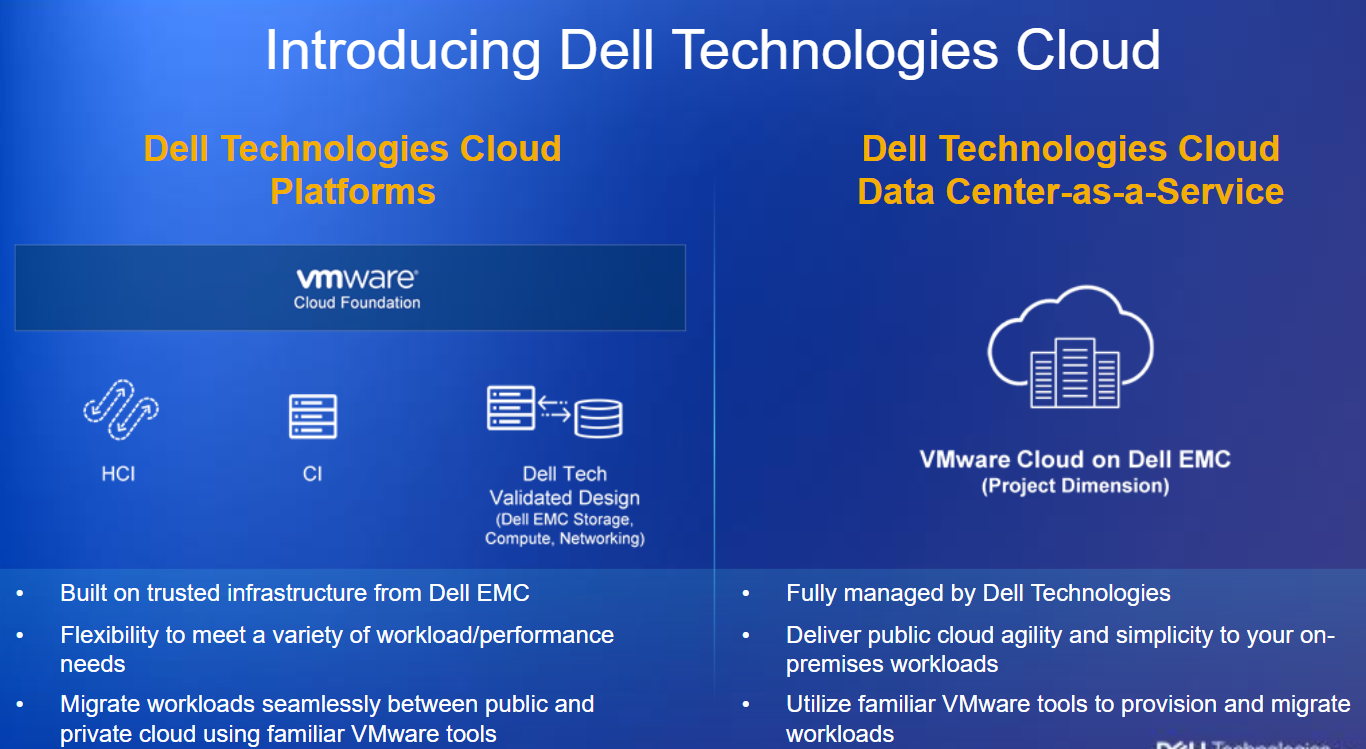
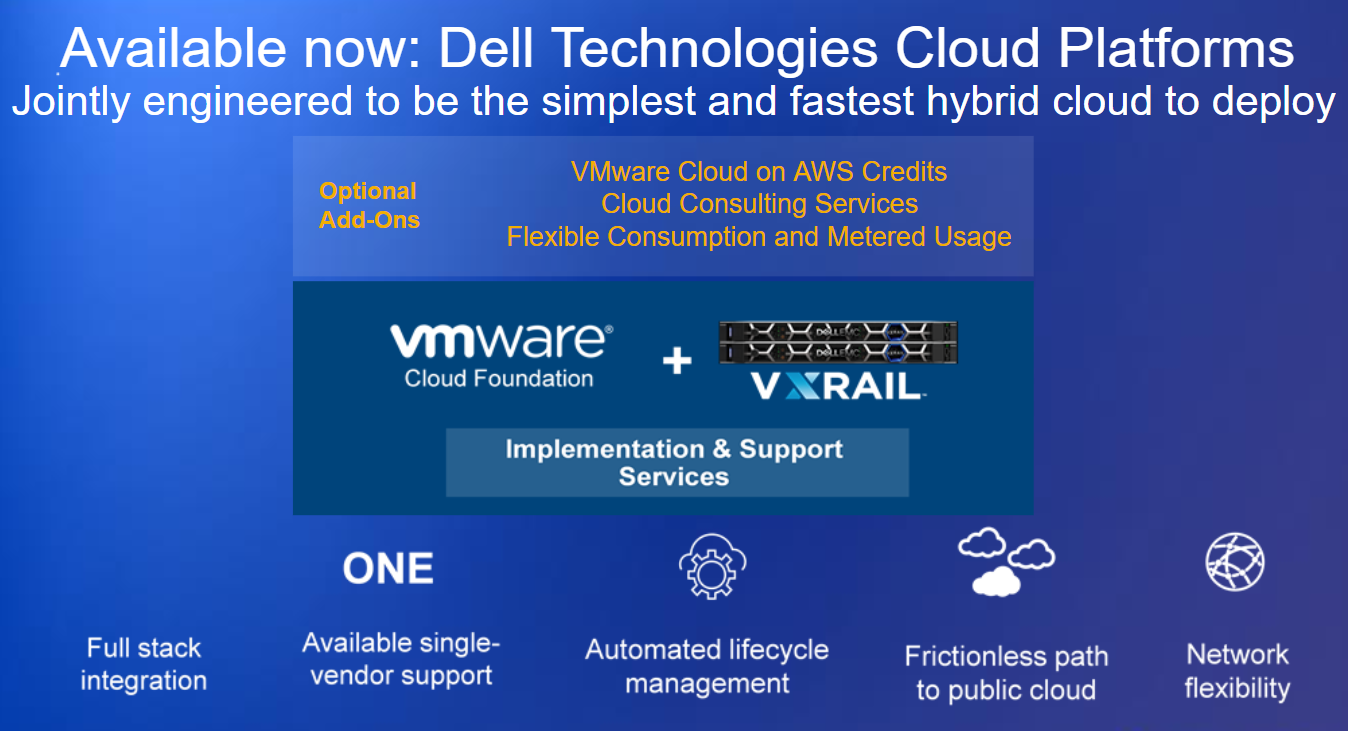
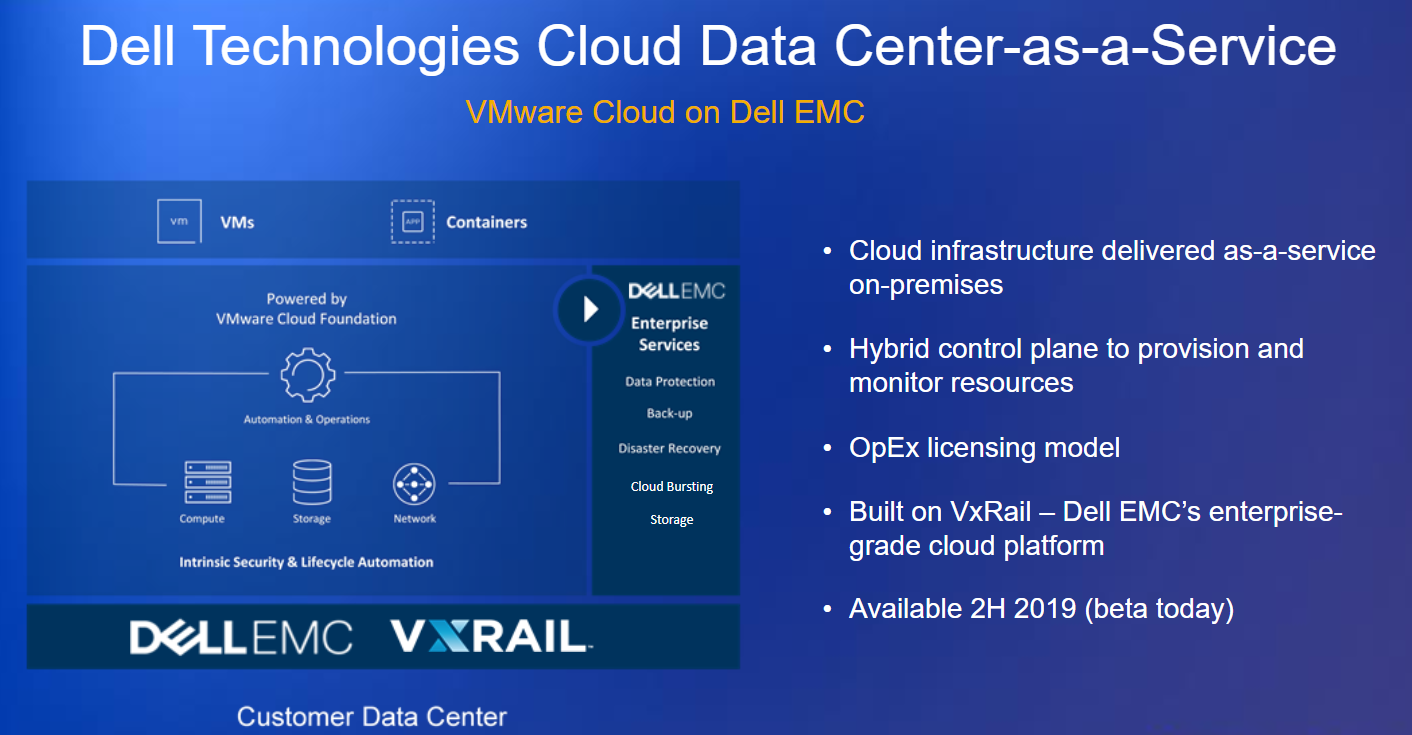

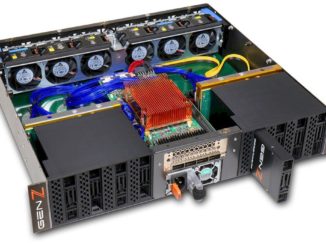
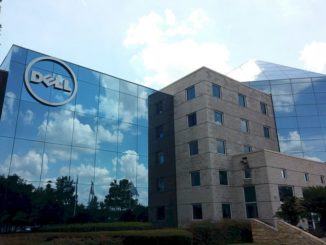

Be the first to comment